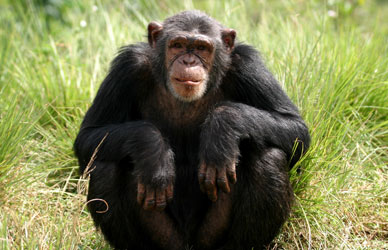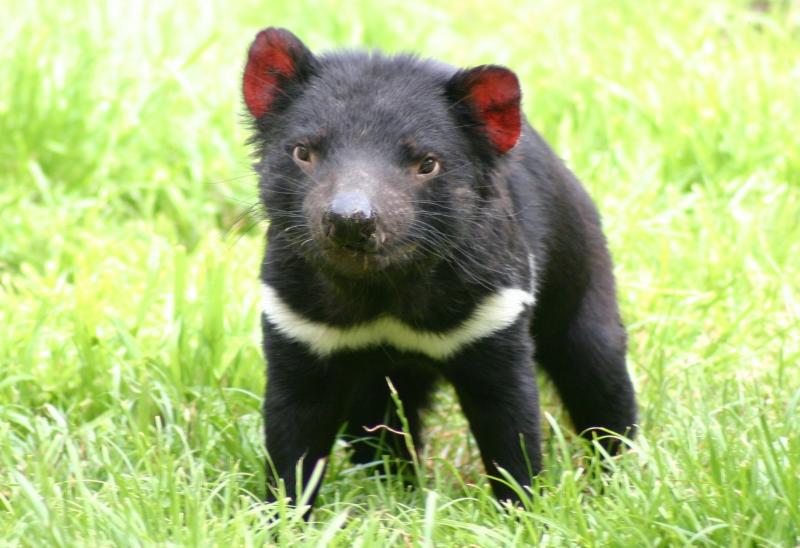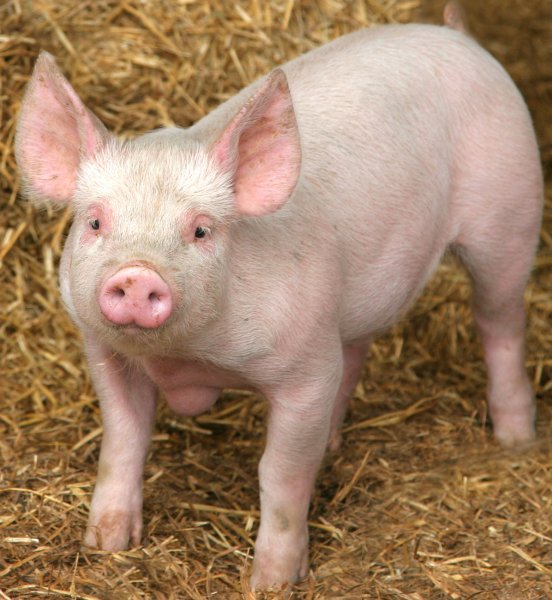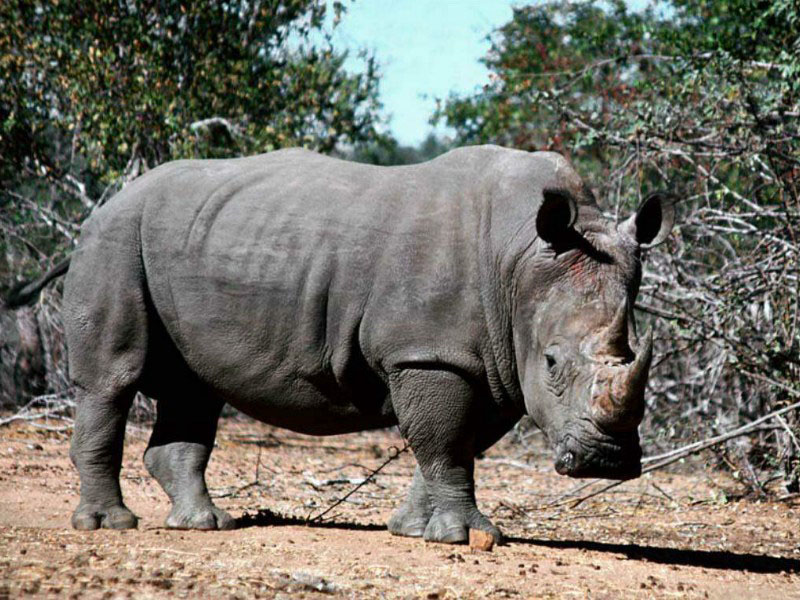It looks like you're using an Ad Blocker.
Please white-list or disable AboveTopSecret.com in your ad-blocking tool.
Thank you.
Some features of ATS will be disabled while you continue to use an ad-blocker.
share:
Welcome to my Laboratory
en.wikipedia.org...
www.csa.com...
www.bsas.org.uk...
www.fda.gov...
www.naturalnews.com...
So now you know the world isn't exactly what you thought it was! Is the universe as you thought it was?
Apes


Random Mammals


Pachyderms


Humans


Apes = 48 chromosomes
Man = 46 chromosomes
Why did skin,hair,eyes and genetics all change? What is evolutionarily logical about losing fur? When you need it to survive. Especially during the last ice age.
Apes deep in the congo jungle in 85% humidity and 88 degree weather has retained there fur.
Is it possible that something or someone has engineered mankind? If mankind is doing it now in this day an age to his own planet why not?
Has anyone noticed that the only 2 land mammal species without very much body fur are humans and pachyderms?
What happened to evolving from apes?
Let the festivities begin!
Genetically modified foods are foods derived from genetically modified organisms (GMOs). Genetically modified organisms have had specific changes introduced into their DNA by genetic engineering techniques. These techniques are much more precise[1] than mutagenesis (mutation breeding) where an organism is exposed to radiation or chemicals to create a non-specific but stable change. Other techniques by which humans modify food organisms include selective breeding; plant breeding, and animal breeding, and somaclonal variation.
GM foods were first put on the market in 1996. Typically, genetically modified foods are transgenic plant products: soybean, corn, canola, rice, and cotton seed oil. Animal products have also been developed, although as of July 2010 none are currently on the market.[2] In 2006 a pig was controversially[3][4] engineered to produce omega-3 fatty acids through the expression of a roundworm gene.[5] Researchers have also developed a genetically-modified breed of pigs that are able to absorb plant phosphorus more efficiently, and as a consequence the phosphorus content of their manure is reduced by as much as 60%.
en.wikipedia.org...
Genetically-modified foods (GM foods) have made a big splash in the news lately. European environmental organizations and public interest groups have been actively protesting against GM foods for months, and recent controversial studies about the effects of genetically-modified corn pollen on monarch butterfly caterpillars1, 2 have brought the issue of genetic engineering to the forefront of the public consciousness in the U.S. In response to the upswelling of public concern, the U.S. Food and Drug Administration (FDA) held three open meetings in Chicago, Washington, D.C., and Oakland, California to solicit public opinions and begin the process of establishing a new regulatory procedure for government approval of GM foods3.
www.csa.com...
Humans have been involved in genetic modification of animals, whether knowingly or not, since domestication began about 12,000 years ago. For most of this time genetic modification has been brought about simply by identifying and breeding from animals which best suited human needs for food, clothing, transport or draught power. The increase in the human population in the 18th century led to greater emphasis on 'selective breeding' (picking the best animals to be parents of the next generation) for increased output of animal products such as meat, milk, fibre and eggs.
Potentially, direct genetic modification could be used to enhance the productivity of farm animals, or alter their products e.g. by creating strains which grow faster, which show greater resistance to disease, or which produce novel proteins in their eggs or milk that are beneficial to human health. Such applications are being investigated experimentally in some countries, but the routine use of direct genetic modification in food-producing animals is unlikely in the short to medium term.
www.bsas.org.uk...
Genetic engineering is a targeted and powerful method of introducing desirable traits into animals using recombinant DNA (rDNA) technology. DNA is the chemical inside the nucleus of a cell that carries the genetic instructions for making living organisms.
In January, 2009, the Food and Drug Administration issued a final guidance for industry on the regulation of genetically engineered (GE) animals. The guidance explains the process by which FDA is regulating GE animals and provides a set of recommendations to producers of GE animals to help them meet their obligations and responsibilities under the law. While the guidance is intended for industry, FDA believes it may also help the public gain a better understanding of this important and developing area.
www.fda.gov...
A British lord and fertility researcher has announced plans to breed genetically engineered pigs, for the purpose of harvesting their organs for transplant into humans.
www.naturalnews.com...
So now you know the world isn't exactly what you thought it was! Is the universe as you thought it was?
Apes


Random Mammals


Pachyderms


Humans


Apes = 48 chromosomes
Man = 46 chromosomes
Why did skin,hair,eyes and genetics all change? What is evolutionarily logical about losing fur? When you need it to survive. Especially during the last ice age.
Apes deep in the congo jungle in 85% humidity and 88 degree weather has retained there fur.
Is it possible that something or someone has engineered mankind? If mankind is doing it now in this day an age to his own planet why not?
Has anyone noticed that the only 2 land mammal species without very much body fur are humans and pachyderms?
What happened to evolving from apes?
Let the festivities begin!
edit on 12-3-2012 by 1Sun3Mud6 because: (no reason given)
Genes from the humans were put into sheep in Aotearoa (New Zealand), in hopes that the sheep would produce a drug to be used against emphysema. Some people agreed to give genetic samples, but nobody consented to having them put into sheep. (PPL Therapeutics of Scotland, in conjunction with Selbourne Pharmaceuticals)
In Virginia, human genes have been introduced into cows, in order to have the cows produce human breast milk, in a collaboration between PPL therapeutics and infant formula companies.
Spider genes were put into goats, so that goats will produce silk genes in their milk. The company doing this plans to use the silk for bullet proof vests and anti-ballistic missile systems (Nexia Biotechnologies of Canada)
Mice have been genetically engineered to produce human proteins in their semen. The plan is to later use this same technique with pigs.
Man-made copies of the flounder fish's anti-freeze gene have been inserted into potatoes, tobacco, and tomatoes to try to make them more resistant to frosts.
Is this even right for this to be happening? Is anything safe and natural anymore? What about our evolution time table! Isn't evolution supposed to take many many years. Mankind has seem to have done what takes other species light years. We've done it in warp speed.
Who? What? When? Where? and Why?
reply to post by 1Sun3Mud6
Star & Flag. Anyone with half a brain can see you spent some time doing a little research and some effort in putting it together, and that I can appreciate.
About the fur....
More pics of humans:
Star & Flag. Anyone with half a brain can see you spent some time doing a little research and some effort in putting it together, and that I can appreciate.
About the fur....
More pics of humans:
edit on 12-3-2012 by ILikeStars because: remove one pic that did not work.
reply to post by 1Sun3Mud6
Oh, nearly missed this common misconception:
Common ancestry. Humans and apes share a common ancestry. We didn't evolve "from" apes.
This video explains it. It is rather scientific, so be prepared:
(Begins at 2:30)
This one is Dr. Ken Miller, a portion of a lecture discussing an old "Intelligent Design" debate that went to trial. It is more conversational:
Oh, nearly missed this common misconception:
What happened to evolving from apes?
Common ancestry. Humans and apes share a common ancestry. We didn't evolve "from" apes.
Apes = 48 chromosomes
Man = 46 chromosomes
This video explains it. It is rather scientific, so be prepared:
(Begins at 2:30)
This one is Dr. Ken Miller, a portion of a lecture discussing an old "Intelligent Design" debate that went to trial. It is more conversational:
edit on Mon 12 March 2012 by ProudBird because: (no reason given)
reply to post by ILikeStars
How do we know that is not the ape gene trying to get out? Say we were gentically modified like in Craig Vinter's research you still need a template. If you were going to take a species here on the Earth and gentically modify it the only thing useable is an ape template correct?
So lets say this genetic modification happens. As time goes on and the experiment becomes more thouroughly planned out. You start suppressing the ape genes allowing for the eventual rise of modern man!
But as we know so long as you suppress something eventually it will try to come out some way or another. Are them pics them proof that the ape gene is trying to break the genetic chains supplanted on it? By whatever used the ape template.
How do we know that is not the ape gene trying to get out? Say we were gentically modified like in Craig Vinter's research you still need a template. If you were going to take a species here on the Earth and gentically modify it the only thing useable is an ape template correct?
So lets say this genetic modification happens. As time goes on and the experiment becomes more thouroughly planned out. You start suppressing the ape genes allowing for the eventual rise of modern man!
But as we know so long as you suppress something eventually it will try to come out some way or another. Are them pics them proof that the ape gene is trying to break the genetic chains supplanted on it? By whatever used the ape template.
In 1987, a group of geneticists published a surprising study in the journal Nature. The researchers examined the mitochondrial DNA (mtDNA) taken from 147 people across all of today's major racial groups. These researchers found that the lineage of all people alive today falls on one of two branches in humanity's family tree. One of these branches consists of nothing but African lineage, the other contains all other groups, including some African lineage.
science.howstuffworks.com...
The evidence of DNA reveals that all humans are very closely related. A Scot, a Japanese and an Australian Aborigine are far more closely linked by family inheritance than any three chimpanzees from different African groups. DNA research suggests that all surviving humans are descended from one woman who lived perhaps 200,000 years ago.
www.guardian.co.uk...
By contrast, the Neandertal genome had an average of 27 +/- 2.2 differences from modern humans (3.375 times the average difference between modern humans). The smallest difference between any human and the Neandertal was 22, and the largest difference between any human and the Neandertal was 36. These differences put the Neandertal genome well outside the limits of modern humans. Another interesting result is that the mtDNA sequence seemed equally distant from all modern groups of humans. In particular, it did not seem to be more closely related to Europeans, something that might have been expected if, as some scientists think, Neandertals were at least partly ancestral to them.
www.talkorigins.org...
So basically Neanderthals and Modern Humans were 2 different tribes interbreeding together! How did Modern Man jump on the scene so quickly? And who were these neanderthals?
People with blue eyes have a single, common ancestor, according to new research.
www.livescience.com...
New research shows that people with blue eyes have a single, common ancestor. A team at the University of Copenhagen have tracked down a genetic mutation which took place 6-10,000 years ago and is the cause of the eye colour of all blue-eyed humans alive on the planet today.
www.sciencedaily.com...
Is blue eyes just a mutation or is it a gene alien to the ape world? Anything different added to a species is obviously going to be considered a mutation. But can we really accept it as that? And what about blonde hair?
reply to post by ProudBird
How far fetched is it to believe that, that common ancestor was half ape and half "alien to the earth". (god)
We were created in their image and their likeness. Whose image and whose likeness?
I bet the missing link has been found! They just keep it hidden at wright pat air force base?
Come on how far fetched could it be?
How far fetched is it to believe that, that common ancestor was half ape and half "alien to the earth". (god)
We were created in their image and their likeness. Whose image and whose likeness?
I bet the missing link has been found! They just keep it hidden at wright pat air force base?
Come on how far fetched could it be?
I definitely think we were engineered by another race. I think that is what the creation story is telling us.
I read a story quite a while back where archeologists discovered "tubes" or canisters that resembled test tubes.
For the life of me, I cannot find the link though...sorry
I can just imagine what we would do if we found a planet similar to ours with no humanoid on it. I'm sure we would do the same thing...plant them there, and genetically alter them to live and survive in that atmosphere. We would be "The Gods".
Star and flag. My favorite topic!
I read a story quite a while back where archeologists discovered "tubes" or canisters that resembled test tubes.
For the life of me, I cannot find the link though...sorry
I can just imagine what we would do if we found a planet similar to ours with no humanoid on it. I'm sure we would do the same thing...plant them there, and genetically alter them to live and survive in that atmosphere. We would be "The Gods".
Star and flag. My favorite topic!
reply to post by Tripple_Helix
Hmmm and I bet on said planet right now they will have the eqivalent of ATS and chat about whether or not WE exist! Makes you think....
Hmmm and I bet on said planet right now they will have the eqivalent of ATS and chat about whether or not WE exist! Makes you think....
reply to post by 1Sun3Mud6
Well, your thread title makes a good point. They are hiding something. They are hiding something because they tell lies about other people, then 20 years later the people have to reach out from their corners and try to exclaim to the world that the story an individual told was not the right one.
They tell lies that we have no way of verifying, and that we caught them in earlier lies means most likely they arte lying about some of the things said that don't fit into the puzzle.
This appears to be that aliens do not exist and every abduction/cattle mutilation was done by human hands. Humans could be the fathers of the greys beings who walk through walls, how could that happen? I am astounded if they have that technology, because to me in 1975 I don't know why there were so many silent helicopters, and many UFOs, and many strange things.
Well, your thread title makes a good point. They are hiding something. They are hiding something because they tell lies about other people, then 20 years later the people have to reach out from their corners and try to exclaim to the world that the story an individual told was not the right one.
They tell lies that we have no way of verifying, and that we caught them in earlier lies means most likely they arte lying about some of the things said that don't fit into the puzzle.
This appears to be that aliens do not exist and every abduction/cattle mutilation was done by human hands. Humans could be the fathers of the greys beings who walk through walls, how could that happen? I am astounded if they have that technology, because to me in 1975 I don't know why there were so many silent helicopters, and many UFOs, and many strange things.
reply to post by ILikeStars
You could even make a case that the neanderthal gene is overriding the modern man genes. Which makes you have to ask what is the modern man gene?
You could even make a case that the neanderthal gene is overriding the modern man genes. Which makes you have to ask what is the modern man gene?
Originally posted by dayve
y would the air force base have the information?
Good question that's something we really need to look into. Why would weather balloons down in new mexico be sent to dayton ohio?


Watch this next one starting at 3:53
Alien jaw bone at 2:10
I been looking up the alien jaw bone and found nothing. It seems to be covered up except for in this video unless I'm just not looking hard enough. Could be the case. I'll see if I can dig anymore up. If you have information please share.
reply to post by Tripple_Helix
That's exactly what I'm talking about they've already proven that modern man and neanderthals were 2 different tribes of people. And modern man either wiped them out or the interbreeding basically integrated them into modern man society.
So there again! What is this modern man?
en.wikipedia.org...
news.discovery.com...
www.scientificamerican.com...
That's exactly what I'm talking about they've already proven that modern man and neanderthals were 2 different tribes of people. And modern man either wiped them out or the interbreeding basically integrated them into modern man society.
So there again! What is this modern man?
Neanderthals and modern humans coexisted in Europe for several thousand years, but the duration of this period is uncertain.[2] Modern humans may have first migrated to Europe 40–43,000 years ago,[3] and Neanderthals may have lived as recently as 24,000 years ago in refugia on the south coast of the Iberian peninsula such as Gorham's Cave.
en.wikipedia.org...
Mating with Neanderthals and another group of extinct hominids, Denisovans, strengthened the human immune system and left behind evidence in the DNA of people today, according to new research.
"The modern human populations who left Africa to colonize other continents were likely to have been small groups who started off with limited HLA diversity and suffered further reduction of HLA diversity due to disease," Parham told Discovery News. "Interbreeding with archaic humans introduced additional HLA variants into the modern human population that increased their genetic viability and capacity to resist infection."
news.discovery.com...
Researchers sequencing Neandertal DNA have concluded that between 1 and 4 percent of the DNA of people today who live outside Africa came from Neandertals, the result of interbreeding between Neandertals and early modern humans.
www.scientificamerican.com...
reply to post by ProudBird
So which group of apes are the modern humans? And which group of apes are the neanderthals?
So which group of apes are the modern humans? And which group of apes are the neanderthals?
reply to post by greyer
It doesn't help that people help hide the information aswell. I'll give you an example you get abunch of people on a website trying to put information together because it's all scattered out like pieces to a puzzle.
And eventually that website will help shut you down. As if they notified the government "Someone figured it out". Like they said on a documentary I watched. The illuminati think they are the only ones who are supposed to know.
Because the knowledge of et's would destroy morality in humanity.
It doesn't help that people help hide the information aswell. I'll give you an example you get abunch of people on a website trying to put information together because it's all scattered out like pieces to a puzzle.
And eventually that website will help shut you down. As if they notified the government "Someone figured it out". Like they said on a documentary I watched. The illuminati think they are the only ones who are supposed to know.
Because the knowledge of et's would destroy morality in humanity.
Well after reading your op I think it's safe to say we need to start mass producing our own foods!
Originally posted by 1Sun3Mud6
reply to post by greyer
It doesn't help that people help hide the information aswell. I'll give you an example you get abunch of people on a website trying to put information together because it's all scattered out like pieces to a puzzle.
And eventually that website will help shut you down. As if they notified the government "Someone figured it out". Like they said on a documentary I watched. The illuminati think they are the only ones who are supposed to know.
Because the knowledge of et's would destroy morality in humanity.
I know thats crazy, I won't tell a soul.
edit on 13-3-2012 by greyer because: (no reason given)
reply to post by greyer
Thats the problem we need to forget about reputation and just say it. It's like the elephant sittin in the living room. At some point it can be ignored no longer.
Somethings gotta break somewhere and I can gurantee you there's alot of sheeps minds that need saving.
Thats the problem we need to forget about reputation and just say it. It's like the elephant sittin in the living room. At some point it can be ignored no longer.
Somethings gotta break somewhere and I can gurantee you there's alot of sheeps minds that need saving.
new topics
-
NJ Drones tied to Tesla explosion at Trump Las vegas
General Conspiracies: 1 hours ago -
New Jersey-Teachers Can Now Be Certified Without Passing Basic Reading Writing Math Testing
Education and Media: 4 hours ago -
Matthew Livelsberger said he was being followed by FBI
Political Conspiracies: 7 hours ago -
How the Sikhs Deal with Muslim Grooming Gangs – Tommy Robinson
Social Issues and Civil Unrest: 8 hours ago -
Paranoid Liberals Believe U.S. Service Members are More Dangerous than Illegal Aliens.
Social Issues and Civil Unrest: 9 hours ago -
The 119th Congress has Officially Opened for Business
Mainstream News: 10 hours ago -
Here we again... CHINA having mass outbreak of something
Diseases and Pandemics: 10 hours ago
top topics
-
Matthew Livelsberger said he was being followed by FBI
Political Conspiracies: 7 hours ago, 16 flags -
Musk calls on King Charles III to dissolve Parliament over Oldham sex grooming gangs
Mainstream News: 17 hours ago, 14 flags -
FIEND SLASHED: Sara Sharif’s killer dad ‘has neck & face sliced open with jagged tuna tin lid
Mainstream News: 16 hours ago, 10 flags -
Grenfell Tower Fire revisited
Mainstream News: 17 hours ago, 9 flags -
Here we again... CHINA having mass outbreak of something
Diseases and Pandemics: 10 hours ago, 8 flags -
The 119th Congress has Officially Opened for Business
Mainstream News: 10 hours ago, 7 flags -
Paranoid Liberals Believe U.S. Service Members are More Dangerous than Illegal Aliens.
Social Issues and Civil Unrest: 9 hours ago, 6 flags -
How the Sikhs Deal with Muslim Grooming Gangs – Tommy Robinson
Social Issues and Civil Unrest: 8 hours ago, 6 flags -
New Jersey-Teachers Can Now Be Certified Without Passing Basic Reading Writing Math Testing
Education and Media: 4 hours ago, 4 flags -
Flee from idolatry
Religion, Faith, And Theology: 15 hours ago, 3 flags
active topics
-
Matthew Livelsberger said he was being followed by FBI
Political Conspiracies • 58 • : CarlLaFong -
Tesla Cybertruck Explodes in Front of Trump Hotel in Las Vegas
Mainstream News • 192 • : CarlLaFong -
President-elect Trump asks the Supreme Court to Let Tik-Tok Continue Operating in the U.S..
Mainstream News • 33 • : WeMustCare -
Paranoid Liberals Believe U.S. Service Members are More Dangerous than Illegal Aliens.
Social Issues and Civil Unrest • 26 • : Xtrozero -
So, what is really going on in South Korea ?
World War Three • 11 • : rickymouse -
Here we again... CHINA having mass outbreak of something
Diseases and Pandemics • 17 • : MetalThunder -
NJ Drones tied to Tesla explosion at Trump Las vegas
General Conspiracies • 1 • : Skinnerbot -
The Why Files Lacerta Reveals the Truth of our Creation
Aliens and UFOs • 8 • : DaydreamerX -
Post A Funny (T&C Friendly) Pic Part IV: The LOL awakens!
General Chit Chat • 7986 • : baddmove -
-@TH3WH17ERABB17- -Q- ---TIME TO SHOW THE WORLD--- -Part- --44--
Dissecting Disinformation • 3920 • : 777Vader

